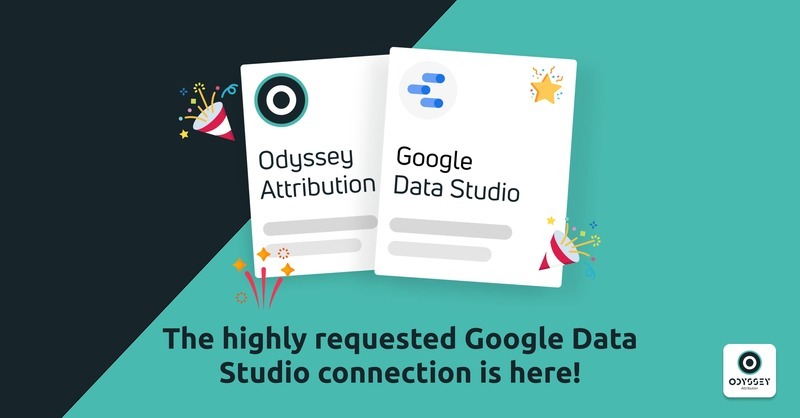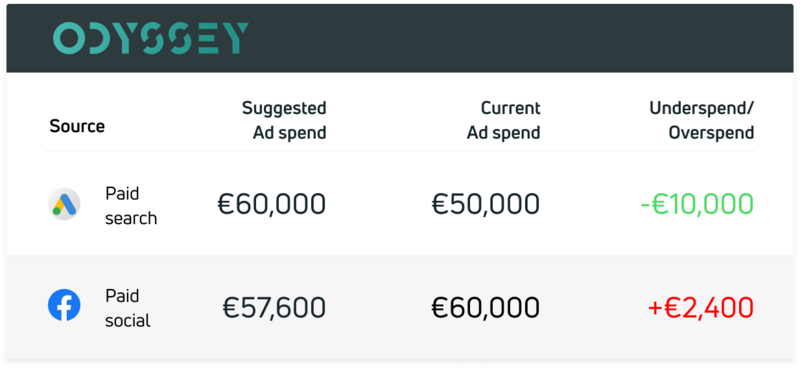The highly requested Google Data Studio connection is here!
A new marketing breakthrough! Multi-touch attribution templates are now available for Google Data Studio. Discover now how it works.
I’ve always been fascinated by the affiliate marketing industry, not in the last place because in my opinion so much money is being spent in the wrong way. The lack of a proper attribution model within the industry is actually more or less how we got to the first version of Odyssey. However, there are more topics in which I believe the affiliate industry is completely missing the point. One of these topics is the incredible amount of rewarding techniques affiliate networks have created over the years….
Affiliate networks are experts in creating ways to reward publishers, but in who’s interest are all these rules actually working?
Publishers tend to get lost in all the exceptions. Wouldn’t it be a lot nicer to get the same amount of commission for every sale, instead of working with a system with hundreds of exceptions, such as basket freeze, return cancellations, product categories or receiving a lower commission just because you are part of a certain category?
For advertisers, creating all these rules is pretty much fighting the symptoms instead of solving what really matters. What should be key to advertisers is that they won’t be paying affiliates for sales which they would have had anyway, or where at least the incremental value of the affiliates isn’t as high as what they got paid for.
One of the great things about the affiliate industry has always been the fact that advertisers only had to pay for performance. When there aren’t any sales; advertisers don’t have any costs. Over the years, both affiliates and advertisers became smarter in making or saving money. At the same time, the occurrence of fraudulent behaviour among some affiliates resulted in a lot of distrust within the channel. Therefore, in more and more situations, advertisers didn’t want to pay or wanted to pay less for sales to which the affiliate channel had contributed to.
Instead of fixing the problem, affiliate networks created solutions for all these exceptions, which resulted in the situation that we’re in right now and which doesn’t really help the channel, nor the advertisers or publishers individually.
I strongly believe that advertisers should reward affiliates on a macro level instead of a micro level. This means checking the number of sales of the affiliate, and then rewarding them based on their role in the customer journey and evaluating their net worth, instead of checking every sale individually and finding out how valuable the affiliate really was in that particular case.
What if we could start all over again? The power lies in the hands of the advertisers; they decide what they’re paying for. If I were an advertiser, I wouldn’t care about individual sales, but look at the contribution of every individual affiliate to my total net sales.
For example, if one of my affiliates had contributed to 1,000 sales last year, I would have wanted to know what his average role was in these 1,000 customer journeys. Based on this insight combined with other data like the kind of products that have been sold in these transactions, I could determine what the incremental value of this affiliate had been and compare it with what I’ve paid him.
If I’ve paid too much, I would show him my insights and explain to him that he has to improve if he wants to receive the same commission this year. If the affiliate was more valuable than what I’ve paid him, I would discuss with him how he could generate more revenue for me with the same incremental value and I would tell him that I would be happy to invest in him.
With this approach, affiliates will become partners and the chance of fraudulent behaviour will automatically decrease.
As I’ve tried to make clear, the solution shouldn’t be that difficult and I know a couple of advertisers that have a similar approach already. It’s interesting though that these advertisers are such a small minority since the current situation isn’t really in the advertiser’s own interest, nor is it in the interest of the publishers. However, there is one party in the affiliate eco-system that actually might really benefit from all these rules; the affiliate network.
The more rules and exceptions in rewarding the affiliates, the more hassle it would actually be for advertisers to switch affiliate networks and the harder it will be for new affiliate networks to enter the market…
Maybe, it’s gonna be time to re-start affiliate marketing, don’t you think?
For our Dutch readers; check this blog post on multi-touch affiliate marketing.
The highly requested Google Data Studio connection is here!
A new marketing breakthrough! Multi-touch attribution templates are now available for Google Data Studio. Discover now how it works.
How Odyssey uses Google Analytics as a tracking source
One of the biggest benefits of Odyssey Attribution is that we are able to extract the raw data from Google Analytics. How, you are asking? Let us explain
How to include costs and revenue in your attribution model?
It's important to see which marketing channels drive most of the value, but if these channels cost you a fortune, you don't want to spend all your marketing budget there. Therefore, including both costs and revenue in your MTA model is essential.


